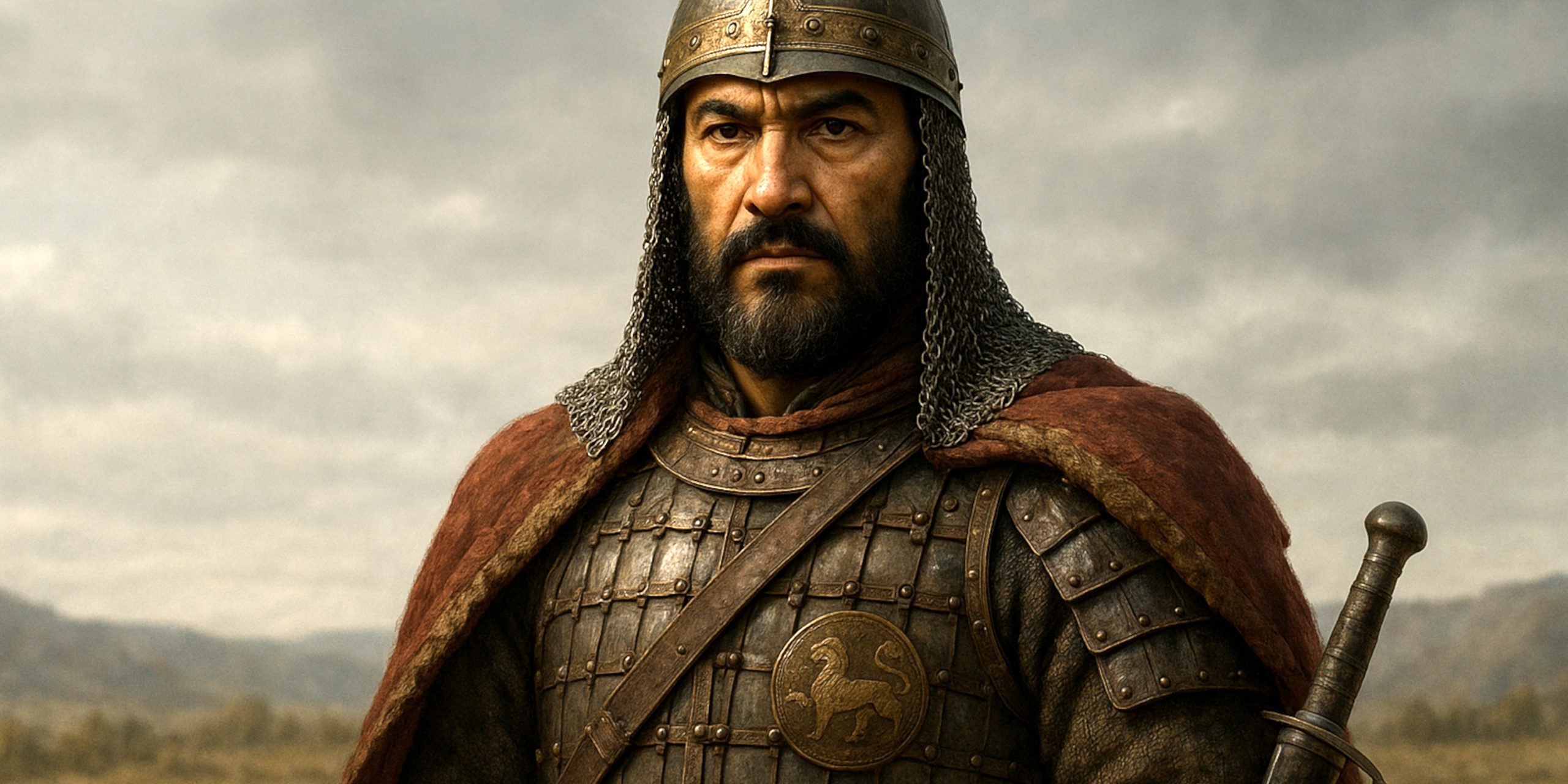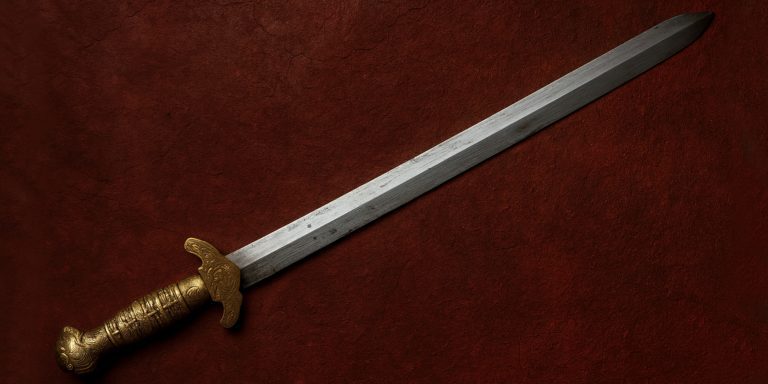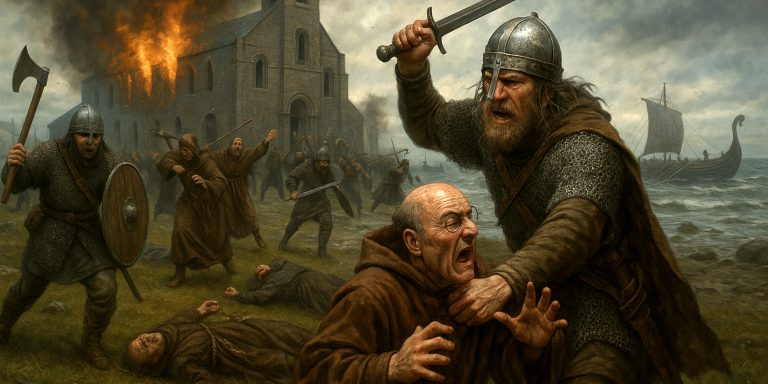
Few rulers in medieval history combined ruthless cunning, battlefield brilliance, and administrative reform as effectively as Sultan al-Malik al-Zahir Rukn al-Din Baibars. Rising from servitude as a Kipchak Turkic Mamluk to become the Sultan of Egypt and Syria, Baibars transformed the Islamic world’s fortunes during the 13th century. His rule (1260–1277) halted both Mongol expansion and Crusader influence in the Levant, establishing the Mamluks as one of the most formidable powers of the medieval era.
Baibars is not an easy man to romanticise. His story is one of cold pragmatism, ferocious ambition, and an unrelenting drive for survival. Yet it is impossible to deny his genius.
Arms and Armour
Baibars’ Mamluk army represented the pinnacle of Islamic military organisation in the late Middle Ages. His personal equipment, and that of his elite guard, combined Turkic steppe influences with Arabic and Persian craftsmanship.
Typical Arms:
- Primary Weapon: Composite bow of horn, wood, and sinew – the hallmark of the Mamluk cavalryman. Capable of deadly accuracy from horseback.
- Secondary Weapon: Curved sabre (similar to the early kilij), optimised for slashing in close cavalry combat.
- Lance (rumh): A long, flexible spear used for the charge and for duelling.
- Dagger (khanjar): Carried for personal defence and often ornately inscribed.
Armour and Protection:
- Mail-and-plate hauberk: Combining flexibility and strength, often reaching to the knees.
- Conical helmet: With nasal guard and mail aventail, sometimes inlaid with gold or Qur’anic inscriptions.
- Lamellar cuirass: Used by elite guards, inherited from Central Asian and Mongol traditions.
- Shield: Usually round or kite-shaped, made of layered leather and decorated with Baibars’ emblem – a leaping lion or panther, symbolising his nickname al-Bunduqdārī (“the Bowman”).
Baibars’ lion motif became iconic, appearing on Mamluk coins, banners, and architectural decorations across Cairo and Damascus. It was both a mark of pride and a reminder of his strength.
Battles and Military Acumen
Baibars’ career is defined by an extraordinary instinct for warfare. His understanding of mobility, psychological warfare, and discipline reshaped the Mamluk military system.
Key Battles:
| Battle | Date | Opponents | Outcome | Notes |
|---|---|---|---|---|
| Battle of La Forbie | 1244 | Crusader and Ayyubid coalition | Mamluk victory | As a young officer, Baibars commanded units that annihilated the Crusader forces. |
| Battle of Ayn Jalut | 1260 | Mongols (Kitbuqa’s army) | Decisive Mamluk victory | Baibars devised ambush tactics, feigned retreat, and coordinated a devastating counterattack that ended Mongol advance into Syria. |
| Siege of Antioch | 1268 | Crusader Principality | Mamluk victory | Ruthless campaign that ended 170 years of Crusader presence in northern Syria. Baibars razed Antioch but spared its citadel, showcasing both terror and restraint. |
| Conquest of Arsuf and Safed | 1265–1271 | Crusader garrisons | Mamluk victory | Systematic dismantling of Crusader fortresses through siegecraft and negotiation. |
Baibars’ campaigns were marked by speed and coordination. He restructured communication by establishing a pigeon post system, arguably the world’s first state-wide postal network, allowing him to receive intelligence in real time. He also rebuilt the navy, enabling the Mamluks to threaten Cyprus and repel maritime Crusader raids.
His leadership combined iron discipline with a capacity for calculated cruelty. He executed captured Mongol envoys yet rewarded loyal commanders lavishly. As a historian, I find him both fascinating and chilling, a man who seemed to treat mercy as a strategic resource rather than a moral instinct.
Statesman and Reformer
Baibars’ achievements extended beyond the battlefield. He:
- Re-established the Abbasid Caliphate in Cairo after the Mongols destroyed Baghdad (1258), lending his rule immense religious legitimacy.
- Reorganised Egypt’s iqta’ (land grant) system, ensuring the Mamluk military class remained loyal and financially supported.
- Strengthened trade routes and restored law and order after years of instability.
- Promoted scholarship and architecture, sponsoring madrassas, mosques, and hospitals throughout his territories.
Baibars’ administrative vision was pragmatic and centralised. He fused military autocracy with religious orthodoxy, giving his regime both strength and continuity.
Where to See Artefacts from His Reign
Traces of Baibars’ rule survive across the Middle East, particularly in Egypt and Syria.
Key Artefacts and Sites:
- Mosque of al-Zahir Baybars, Cairo – built in 1268, currently undergoing restoration. One of the earliest examples of Mamluk monumental architecture.
- Citadel of Cairo – expanded under Baibars, housing several original foundations and military structures.
- Damascus Citadel – partially restored by Baibars; sections of his inscriptions and construction works remain visible.
- Coins and Seals – specimens bearing the lion emblem can be found in the British Museum (London), the Museum of Islamic Art (Cairo), and the Louvre (Paris).
These artefacts reveal Baibars as both conqueror and builder, his reign preserved not only in chronicles but in the stone and steel of his empire.
Latest Archaeology and Research
Recent archaeology continues to refine our understanding of Baibars’ legacy:
- Restoration of the Cairo mosque has uncovered original foundation stones, Arabic inscriptions, and early Mamluk decorative motifs that blend Ayyubid and Central Asian styles.
- Excavations in Antioch (Antakya) following recent earthquakes have revealed Crusader-Mamluk layers showing evidence of Baibars’ siege and subsequent urban reconstruction.
- A rediscovered document fragment in the archives of Damascus, dated to 1275, details his pigeon post system in surprising administrative detail, suggesting an intelligence network of remarkable sophistication.
- Metallurgical studies of surviving Mamluk blades indicate imported steel from India and Central Asia, a sign of Baibars’ extensive trade and diplomatic connections.
It is becoming clear that Baibars’ state was far more than a reactionary military regime, it was a dynamic and organised system rooted in information, commerce, and military readiness.
Legacy
Baibars’ death in 1277, reportedly after drinking poisoned kumis intended for another, marked the end of an era. Yet the institutions he built endured for centuries. The Mamluk Sultanate he founded would dominate Egypt and the Levant until the Ottoman conquest in 1517.
As a historian, I view Baibars as one of the great paradoxes of medieval leadership. A slave who became a sultan. A destroyer who built institutions. A man both feared and admired. In him, the medieval world found a ruler whose intelligence equalled his brutality, and whose empire, for a time, stood unchallenged between East and West.
Watch the documentary:



